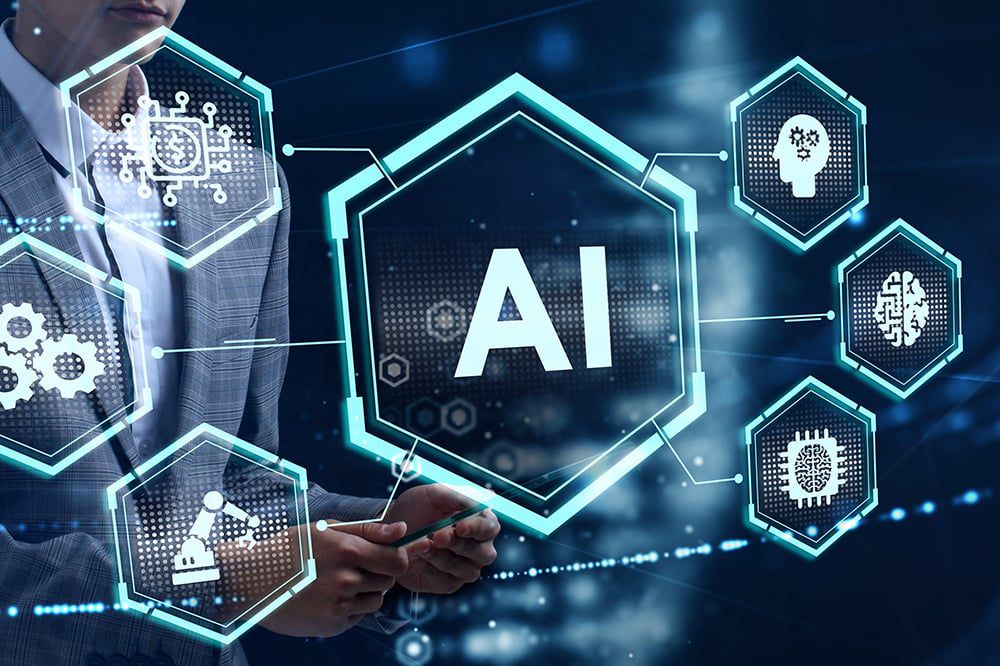Introduction:
The convergence of artificial intelligence (AI) Development Services and autonomous drones has ushered in a new era of possibilities, reshaping industries and revolutionizing the way we perceive aerial surveillance and delivery systems. In the dynamic landscape of technology, the marriage of AI with drones not only enhances their capabilities but also introduces a level of precision and adaptability that was once considered the realm of science fiction. In this article, we delve into the transformative impact of AI on autonomous drones, focusing on their applications in precision aerial surveillance and delivery.
The Rise of Autonomous Drones:
Autonomous drones have rapidly evolved from recreational gadgets to sophisticated tools with vast applications across various sectors. Whether in agriculture, logistics, or public safety, the ability of drones to navigate autonomously has opened doors to innovative solutions that were previously impractical or impossible.
Precision Aerial Surveillance:
a. Object Recognition and Tracking:
AI algorithms enable drones to not only capture high-resolution imagery but also process and analyze it in real-time. Object recognition algorithms empower drones to identify and track objects of interest, ranging from vehicles and individuals to specific items within a designated area.
b. Anomaly Detection:
The adaptability of AI allows drones to recognize patterns and detect anomalies. In surveillance scenarios, this capability is invaluable for identifying potential threats, monitoring environmental changes, or even spotting irregularities in critical infrastructure.
c. Smart Navigation:
AI-driven navigation systems enhance the efficiency of autonomous drones, enabling them to navigate complex environments with precision. Drones equipped with obstacle avoidance and path-planning algorithms can seamlessly maneuver through urban landscapes or challenging terrains, ensuring effective surveillance coverage.
AI-Enhanced Delivery Systems:
a. Dynamic Route Optimization:
Autonomous drones powered by AI algorithms can optimize delivery routes based on real-time data. These algorithms consider factors such as traffic, weather conditions, and delivery urgency, ensuring the quickest and most efficient delivery paths.
b. Payload Management:
AI plays a crucial role in managing the weight and distribution of payloads, optimizing the delivery process. Drones equipped with advanced AI algorithms can dynamically adjust their payload configurations to accommodate various package sizes and weights.
c. Delivery Verification:
AI enables drones to verify the accuracy of deliveries by cross-referencing package details with the intended recipient's information. This not only enhances the reliability of drone deliveries but also provides an added layer of security and accountability.
Challenges and Solutions:
Regulatory Frameworks:
The integration of autonomous drones into airspace demands comprehensive regulatory frameworks. Striking a balance between innovation and safety is crucial. Governments and regulatory bodies worldwide are actively working on establishing guidelines to ensure responsible drone usage.
Security Concerns:
As drones become more sophisticated, the potential for unauthorized access and misuse grows. AI-driven security features, such as encrypted communication channels and biometric authentication, are essential in mitigating security risks associated with autonomous drone technology.
Public Perception:
The widespread adoption of autonomous drones faces challenges related to public acceptance and privacy concerns. Education and transparency about the benefits and safeguards implemented in these technologies are crucial to gaining public trust.
Future Prospects:
The synergy between AI and autonomous drones holds immense potential for the future. As technology continues to advance, we can anticipate further refinement and expansion of AI capabilities in drones. The following trends are likely to shape the future landscape of autonomous aerial systems:
Swarm Intelligence:
AI algorithms will enable drones to operate collaboratively in swarms, allowing for increased coverage, redundancy, and adaptability in various applications, from search and rescue missions to large-scale surveillance operations.
Edge Computing:
The integration of AI at the edge – directly on the drone – will become more prevalent. This allows drones to process data locally, reducing latency and enhancing real-time decision-making capabilities.
Environmental Monitoring:
AI-equipped drones will play a crucial role in environmental monitoring, helping track climate changes, wildlife migration patterns, and natural disasters. The precision and adaptability of AI algorithms will be instrumental in addressing global environmental challenges.
Conclusion:
The marriage of AI and autonomous drones heralds a new era of possibilities, where precision aerial surveillance and delivery systems redefine our expectations. From safeguarding public spaces to revolutionizing logistics, the impact of these technologies is profound. As we navigate the future, it is essential to address challenges collaboratively, fostering responsible innovation that prioritizes safety, security, and public trust. The synergy between AI and autonomous drones represents not only a technological evolution but a paradigm shift in how we harness the skies for the betterment of society.



No comments yet